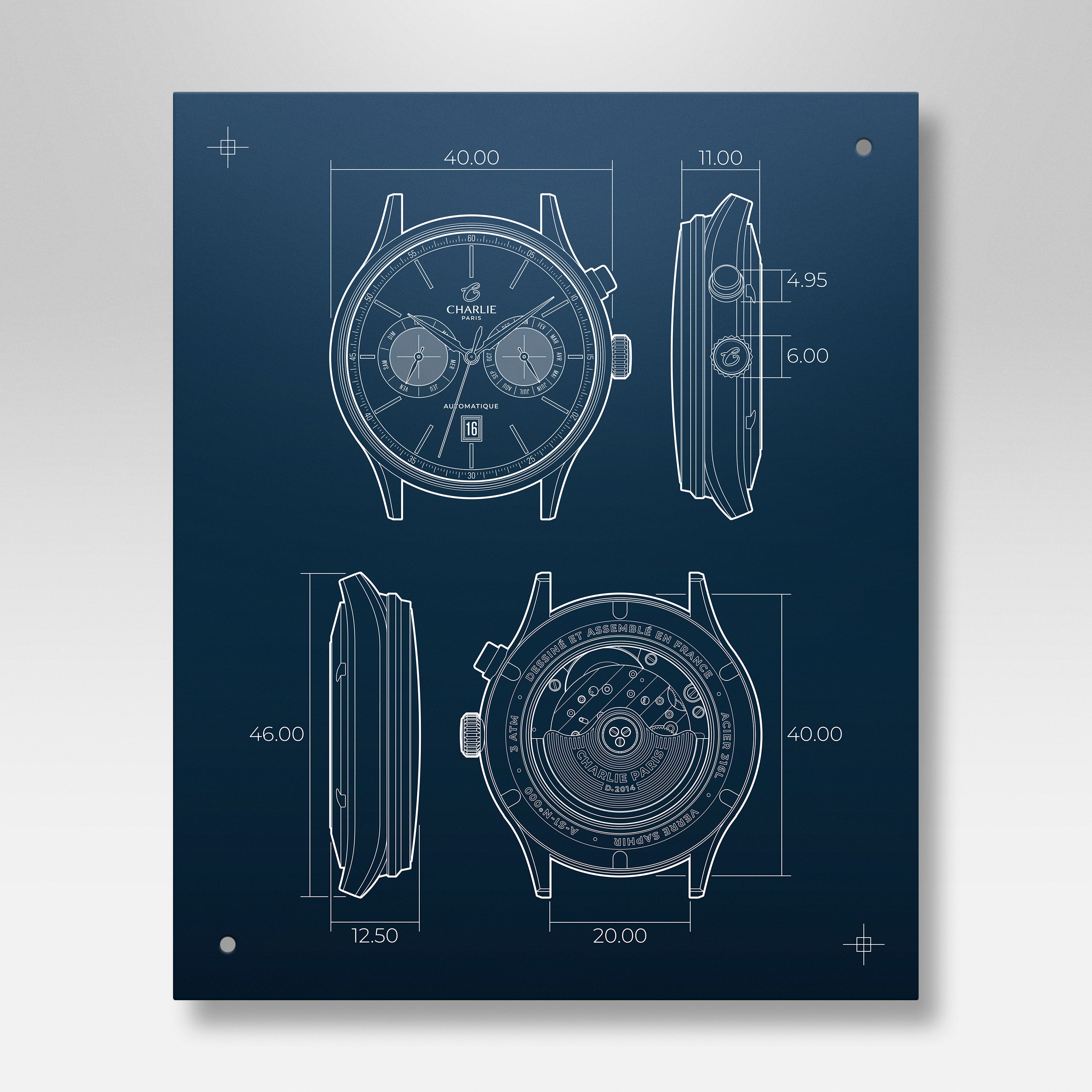
A short history of watchmaking (French)
From the 13th century to today, from the beginnings of watchmaking to the rise of today's timepieces, we will see, in a non-exhaustive way, in this article the history of French watchmaking.
- 1292: Since man has observed the cycle of day and night, he has never ceased to want to measure time, gradually leading him to imagine measuring instruments more or less accurate. It is thus a lively interest which seems to develop from 1292 in France, time when we find trace of the first French clockmaker, Jehan l'Aulogier.
- Middle Ages: Clock-making takes a first political and religious turn. If for the Church the mastery of time allows to give rhythm to the life of the Christians through its clocks and its bell towers, the kings wish to use it to assert the supremacy of their power.
- Around 1410: Appearance of the motor spring thanks to which the truly portable domestic clock was born. Lighter, it also acquired a finer and more refined design, thus opening the way to miniaturization and the creation of the first watches.
-
1505: The first portable watches appear. Their invention is attributed to the German locksmith and watchmaker Peter Henlein who is considered the first to have built a watch in 1505 in Nuremberg. Even if this date is controversial, it remains the only reference to this day. Indeed, from 1504 to 1508 Peter Henlein built a "drum-shaped" watch, the "Taschenuhr", which could run for 40 hours before having to be wound. More precisely, these are very small clocks to which he welded a ring on the side. They can thus be worn as a necklace or at the end of a chain around the neck. It should be noted that archival texts mention portable clocks that would have been made earlier in Italy.
- 1518 : In France, it is François 1er who inaugurates the first "French" watch thanks to Julien Coudray in 1518. Julien Coudray, a watchmaker from Blois, was one of the most skilful craftsmen of the 16th century. Named "clockmaker" of kings Louis XII and François 1er, he was highly respected for his know-how. At the time, to be the king's clockmaker was to have been chosen to embody his vision. At the request of King François 1er, Julien Coudray made a watch inlaid in the pommel of two of his daggers. Julien Coudray is thus considered, according to historical sources, as the inventor of the portable watch.
- 1685: If watchmaking becomes synonymous with art and science in the middle of the 17th century thanks to the improvement of techniques, the revocation of the Edict of Nantes in 1685 will be a real scourge for the French watchmaking excellence. Indeed, before this date France, and more precisely Burgundy-Franche-Comté, was the true cradle of European watchmaking. With the revocation of the Edict of Nantes, Protestant worship was banned, temples were destroyed and many craftsmen such as watchmakers and jewelers were forced into exile. There was a massive emigration of French Protestant watchmakers to Switzerland, taking with them their knowledge and their manufacturing secrets. The consequences were disastrous for France, which saw a host of talented craftsmen and teachers flee.
- It was in 1700 that French watchmaking regained its reputation with the Enlightenment. The know-how of French master watchmakers such as Julien Leroy, will allow to catch up the delay caused by the revocation of the Edict of Nantes. Paris thus became the center of watchmaking know-how and attracted talents from all over Europe. The second half of the Enlightenment was marked by the effervescence of science and technology. Watches became more precise, simpler and more comfortable to use and more discreet.
-
1777: Invention of the automatic movement, at the end of the 18th century, with the Swiss watchmaker Abraham Louis Perrelet and his shaking watch. However, historians are not unanimous about the origin of this invention. If for some, it is the Swiss watchmaker Abraham Louis Perrelet, for others this device would have been invented by the watchmaker of Liège Hubert Sarton in 1778 with a rotor winding.
It is impossible to talk about the history of French watchmaking without mentioning Abraham-Louis Breguet! This French and Prussian watchmaker and physicist has contributed a lot to watchmaking with a long list of inventions and improvements. Breguet is best known for having invented the Tourbillon. This invention was registered in 1801, but was not unveiled to the public until 1806. It is a major invention for modern watchmaking, since this visionary device manages to neutralize the effects of the earth's attraction on the precision of the watch movement. Breguet is also known to have improved the automatic winding, a few years earlier, in 1780, but the inventor of the automatic watch, according to the archives, is either Perellet or more likely Sarton. Among the list of innovations that Breguet was led to develop, we find that of the automatic winding (1780), the stamp spring and the equation of time (1785), the pare-chute (1790), the perpetual calendar (1795), the famous tourbillon (1801) or the chronograph in 1820.
- In the 19th century, in a perpetual quest for practicality, the watch winder was moved from index 12 to index 3. Some watches called "savonnettes" and equipped with a cover had a winding stem at 3 o'clock. In 1810, Abraham Louis-Breguet created a wristwatch with complications for the queen consort of Naples, Caroline Bonaparte.
- It was not until 1875 that the development of transportation was introduced, leading to the unification of time. If previously each city was set according to its own solar time, the creation of the Greenwich meridian became the time reference and will now serve as a benchmark for rail networks around the world.
- At the beginning of the 20th century, the resistance of watches became a priority, illustrated in 1931 with the invention of unbreakable glass. The wristwatch became a real everyday object that never ceased to be democratized thanks to the technical prowess of its inventors.
- 1970: The arrival of quartz, and therefore quartz watches for men, in the 1970s is a real revolution, and will be the origin of the digital display.
- 2021 : Over the last few centuries, the world of watchmaking has undergone unprecedented development. A true element of everyday life, the time is now integrated into a multitude of equipment. If mechanical watchmaking has experienced a significant growth during the early 2000s, we also observe the appearance of connected watches. Watchmaking shows once again how much evolution is possible by combining know-how, tradition, fashion and technology.











Leave a comment
This site is protected by hCaptcha and the hCaptcha Privacy Policy and Terms of Service apply.